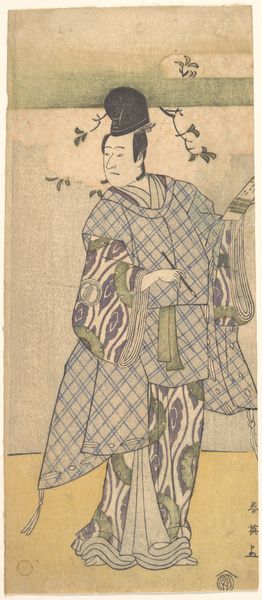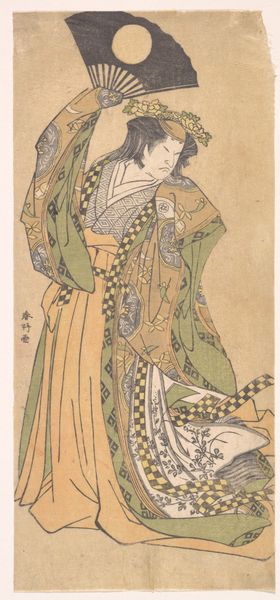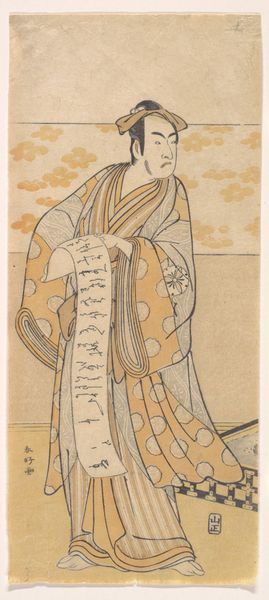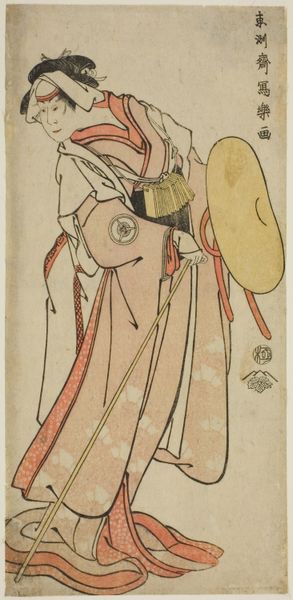
The Third Princess and Her Pet Kitten c. 1767
0:00
0:00
print, ink, woodblock-print, woodcut
#
portrait
#
ink drawing
#
ink painting
# print
#
asian-art
#
ukiyo-e
#
ink
#
woodblock-print
#
woodcut
Dimensions: 27 1/8 × 4 3/4 in.
Copyright: Public Domain
Curator: Here we have Suzuki Harunobu’s “The Third Princess and Her Pet Kitten,” created around 1767. It's an ink and color woodblock print. The princess gazes down at her pet, swathed in flowing robes. What strikes you initially? Editor: The delicate layering of garments. The image presents a harmony of curvilinear forms. There's a sense of quiet contemplation and refined beauty communicated through these shapes and the princess’ downward gaze. Curator: Indeed, Harunobu was a master of capturing fleeting beauty within the ukiyo-e tradition. His use of layered colors, achieved through painstaking woodblock printing, is integral. He innovated *nishiki-e* brocade prints. Considering the materials, the production would have been incredibly collaborative. Editor: Absolutely, we should consider the artisan workshops involved—the carvers, printers, binders, each a master in their own right. It was hardly a solitary artistic endeavor, but a confluence of skills. And what about the paper itself? I imagine high-quality mulberry paper was used, which lends itself well to retaining the impressions of the block. Curator: Yes, the paper’s absorbency would allow for those delicate color gradations so characteristic of Harunobu's work. You observe the skillful application of color within the kimono pattern; notice the textural illusion against the relative smoothness of the pale yellow. Editor: Also, the depiction of a kitten isn't arbitrary. It serves a dual function: imbuing domestic charm and acting as a symbolic accessory—possibly referencing themes of youth, fragility, and beauty, mirroring aspects associated with the princess herself. Curator: A compelling reading. And while the perspective appears simplified, it contributes to the print’s unique flattening of space, pulling the viewer into a closer relationship with the subject. Editor: Looking closely at the making process gives me renewed respect for the artistry. Considering all of this – it transforms my understanding of this deceptively simple print.
Comments
No comments
Be the first to comment and join the conversation on the ultimate creative platform.













